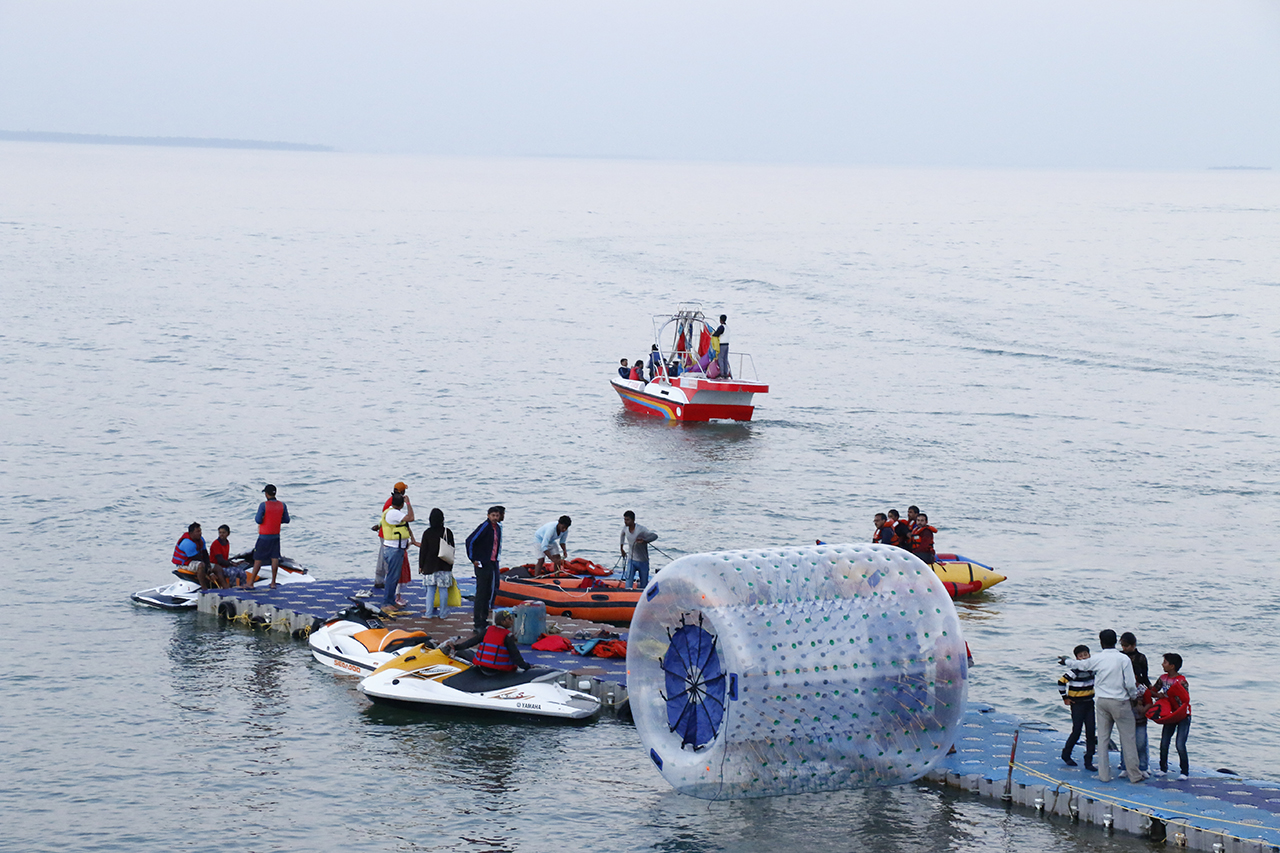Jal Mahotsav: A ‘watercation’ in the ‘heart’ of India

News Gateway / Jal Mahotsav / New Delhi /
Shades of sapphire blue and emerald green. Retreats in cottage tents and house boats. Hot air balloon rides and a glimpse of the Universe under. Clubbed with water surfing and nature safaris, the adventure and tranquility at these small islands in the central Indian plains of Madhya Pradesh offers rejuvenation to the eye and mind. It’s a potpourri of wildlife, heritage, culture, and hill tourism.
Hanuwantiya island in Khandwa offers opportunities akin to ‘coastal’ tourism, as a by product of clean energy and water storage initiatives under the aegis of Indira Sagar Dam project (that forms the largest reservoir in India).
An island in Madhya Pradesh
India’s biggest water carnival through ‘Jal Mahotsav’ is organised every year in Hanuwantiya, easily accessible via Indore and Nagpur. The third such ‘Jal Mahotsav’ concluded this year on January 2. Touted to become the first aqua city in the near future, according to reports, the site was nothing short of a coastal spectacle in central India, harnessing potential of water resources.
While the state is best known for water attractions such as the Dhuandhaar waterfalls, picturesque marbles of Bhedaghaat, spiritual refuge by the holy waters of Amarkantak and mighty falls of Patalpaani, Hanuwantiya offers island tourism – the first of its kind in the state.
This hitherto unchartered territory houses a group of small islands, Boriyamal, Sailani and Hanuwantiya, to name a few, that have been developed to promote water tourism potential of the state. These group of islands christened ‘Madhya Dweep’ add another feather to the state tourism innovative campaigns and efforts, highlighting usage of the state’s natural resources optimally, through aqua safaris and more commonly advertised, ‘water-cations’.
Water cottages, cruises, house boats, hot air ballooning, para-sailing, water scooting, kite flying, water zorbing, ziplining, an all terrain vehicle safari – were all on the platter through this aqua, air and land fiesta. In addition to these, Hanuwantiya welcomed tourists with rich biodiversity through its flora and fauna. Otherwise as well, it is a stunning sanctuary for bird enthusiasts and photographers.
The festival also rightfully showcases rich cultural capital of Madhya Pradesh, highlighting the state’s local tradition and heritage. The government engages with local artisans, dancers and folk experts through dances, folk music and cultural crafts, offering cultural delights to travellers and audience, alike. Local cuisines and delicacies from the state were also on the menu.
Local livelihoods and development
It is no secret that lakes and reservoirs generated by dams offer development through tourism and cultural engagement. In addition to generating aesthetics, such festivals also provide local livelihood opportunities to local communities and artisans, by promoting local employment. It is interesting to note that back in 2012-13, a protest movement under the aegis of Jal Satyagrah was organised in Khandwa, voicing people’s concerns on dams and displacement. Steps like Jal Mahotsav organised using the same water potential at Hanuwantiya, promote rural economies, and are a welcome transition of hinterlands towards local economic development, through market based activities; preserving cultural capital of the state.
The festival in its nascent stage has immense potential to prosper, and provide an attractive alternative to festivals such as ‘Rann Utsav’ in Kutch, Gujarat, that takes place during December – February, in the sands of Thar. It is interesting to take note of the effective utilisation of natural resources in both these states that offer tourist attractions, one in a desert, the other on an island, weaving together heritage, culture and local development, irrespective of geographical differences.
Towards the clarion call on ‘green and clean’ energy by the government, festivals like ‘Jal Mahotsav’ may also promote awareness workshops on natural resource conservation, innovative communication campaigns on government schemes such as ‘Swachh Bharat’ and rich handicrafts from the state. These festivals are encouraging examples of public private community partnerships and have the potential to add to biodiversity, livelihoods through local fisheries, thus maintaining a harmonious relationship between markets and development.